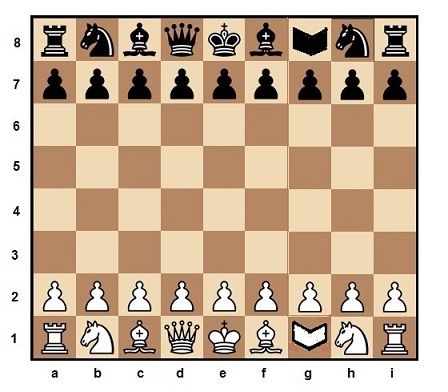Ok @LXIVC. The book pieces in g file should be called as "Library" with first letter of notation is "L" instead of "B" to distinguish it from Bishop notation.
If you play white then mention your first move.

Ok @LXIVC. The book pieces in g file should be called as "Library" with first letter of notation is "L" instead of "B" to distinguish it from Bishop notation.
If you play white then mention your first move.

I'll take black.
I do think that the best way to reduce or eliminate draws is simply to change the winning conditions, so that the most common ending situations are defined as a win for other player or the other. There's no reason to make anything other than repetition or maybe stalemate a draw.
May I ask how the book-like piece on g8 moves?
The book pieces move and captures as king pieces,except they are not a royal pieces.
@evertVB. You are welcome to play this variant with your friend here in this thread.
hi HG,
How do you estimate the draw rate in Games such as Seirawan and Musketeer Chess?
I don't know a way to estimate draw rates. I just measure them. Bij playing a large number of bullet games between an engine and itself. Usually the results do not depend very much on the engine or time control, unless you use very strong engines at very slow time control. When the initial position game theoretically is a draw, (as it is thought to be in most chess-like games) perfect play would of course give you a 100% draw rate.
The 'natural draw rates' I quoted are always measured between equally strong players. With unequal players the draw rate is expected to go down, as there must be many wins to reflect the strength difference.
With really weak (or inexperienced) humans the draw rate probably will go down as well, because many games will be decided by gross blunders. Computers are different in this respect: you can make them weaker by limiting how far they think ahead, but even then they do not make gross blunders.
I'll try it.